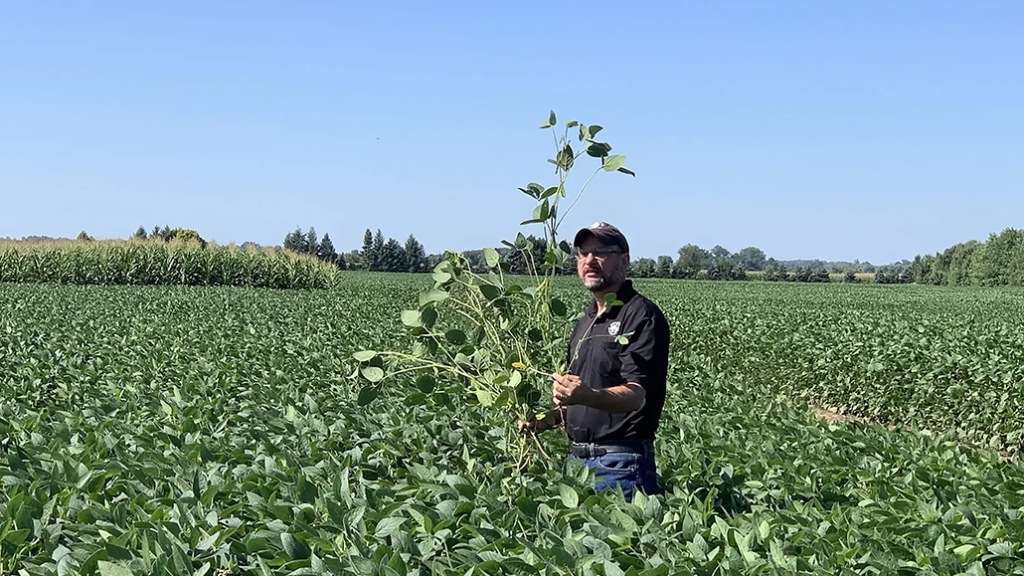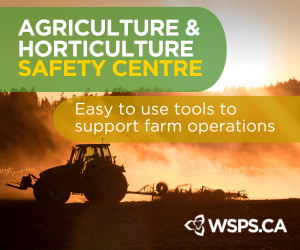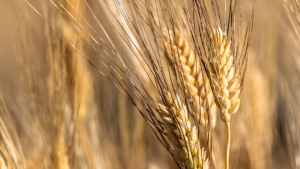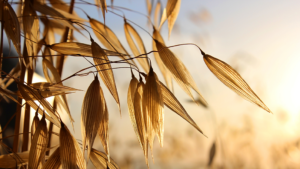Bringing science to the farm
EXTENSION CONNECTS SCIENTISTS AND PRODUCERS

LABORATORY RESEARCH IS vital for addressing emerging problems like tar spot, corn rootworm resistance, and other diseases and pests that threaten Ontario crops. But research results need to move from the lab and be made available to producers who can apply them in the field. And that is where extension professionals come in: connecting research sources like scientists with research users like you.
| WHAT YOU NEED TO KNOW • Extension professionals connect research sources like scientists with research users. • Extension efforts date back to the early 1900s, when the provincial government posted the first agricultural representative to rural Ontario. • OMAFRA’s Ben Rosser, Horst Bohner, Joanna Follings, and Sophie Krolikowski receive funding from Grain Farmers of Ontario to support their extension activities. • Extension did not take a break during the Covid-19 pandemic. OMAFRA extension staff placed new emphasis on digital communications to share agronomic best practices. |
The connection between researchers and producers has become increasingly timely over the past few years, particularly with the wild swings in climate that have left the agriculture sector wondering how to cope. One year, the spring is so warm that producers are in their fields weeks early. The next spring, a polar vortex sweeps through the province, and they’re faced with having to plant into cold soil. Such examples show why, more than ever, extension professionals have their antennae up for the unexpected. They need to be aware of changing field conditions, stay on top of research discoveries that address challenges and make producers aware of emerging opportunities.
Extension professionals are used to the challenge. Extension has long been a vital part of agriculture in Ontario, dating back to the early 1900s when the provincial government posted the first agricultural representative to rural Ontario. Education-wise, the University of Guelph had an active Department of Rural Extension Studies for years.
SUPPORTING EXTENSION
Today, the Ontario Ministry of Agriculture, Food and Rural Affairs (OMAFRA) supports a variety of extension professionals, including field crop specialists for corn, soybeans, and cereals. Their efforts are enhanced through a long-standing agreement with Grain Farmers of Ontario to fund specific outreach initiatives related to grain and oilseed production.
“Grain Farmers of Ontario support gives us the flexibility to respond especially to unanticipated, emerging situations,” says Horst Bohner, OMAFRA soybean extension specialist. “Typically, extension initiatives are undertaken to augment technology transfer efforts, to improve information gathering, and to support breaking issues that occurred throughout the growing season. Extension has a budget, but you can’t dedicate funding for something you don’t know will happen or something that surprises everyone one year but might not happen again until several years later. That flexibility is a big reason why Grain Farmers of Ontario support is so valuable.”
Adds corn extension specialist Ben Rosser: “Grain Farmers of Ontario extension funding has been very important to learning and answering questions around issues that would otherwise be very difficult to fund using the traditional research funding model.” Corn extension funding has been used to investigate timely questions that crop up in a particular year. These include how much grain cleaning can reduce DON levels in corn, the impact of drying temperature on test weight of late planted, very high moisture corn, and whether nitrogen top-ups provide yield responses in years with well above average rainfall in July and August.
COVID-19’S IMPACT
Bohner, Rosser, and cereal crop specialist Sophie Krolikowski (standing in for Joanna Follings, who was on leave), along with other OMAFRA Field Crops Unit members, support Ontario’s field crop sector. The nature of their outreach efforts changed like the rest of society in 2020 when Covid-19 struck, and face-to-face meetings with producers were impossible. Those meetings, such as Ontario Diagnostic Days and the Ontario Agricultural Conference, were popular with producers and foundational for Ontario’s agricultural extension.
But agricultural production did not stop during Covid-19’s darkest days, nor did extension. Like other information sources, the OMAFRA team put a new emphasis on digital communications, particularly video development and website enhancement.
For example, the Field Crop News web page saw views skyrocket through the growing season. Reports about spraying dry beans for western bean cutworm, yield potential of alfalfa, organic no-till soybean production, and the ins and outs of soil structure were big draws. The colourful news pages emphasized useful text and eye-catching photos that helped producers clearly identify pests and plants disease. Diagnostic Days went virtual in 2020 and 2021, then returned as a live event in 2022, with eight 30-minute sessions on topics such as waterlogging woes, foliar disease in corn, cover crop compendium, and herbicide injury and crop sensitivity. But this event retained a digital element by having each session recorded and then broadcast across the province later.
RESOURCE DEVELOPMENT
The team also dedicated Grain Farmers of Ontario funding to updating and enhancing the Ontario Soybean Field Guide and the Ontario Soil Fertility handbook last year, as in-person events returned and producers looked towards receiving print copies of the material. They also produced an impressive, attractive publication called Field Crop Q&As, addressing questions such as what is a fair price for hay, how to control bluegrass in winter wheat, and how fertilizer and crop prices affect optimal fertilizer rates.
On the horizon, the team expects cost of production to be a big driver in its extension efforts for 2023. “The cost of producing a crop is the fundamental thing that’s changed,” says Bohner. “Premiums are up, but costs have skyrocketed. The old question of ‘can I afford to do a certain management technique’ is still the key.” Other efforts will be dedicated to updating the maturity map for corn and soybeans to reflect the increased heat units experienced in Ontario and updated soil fertility recommendations. •
























